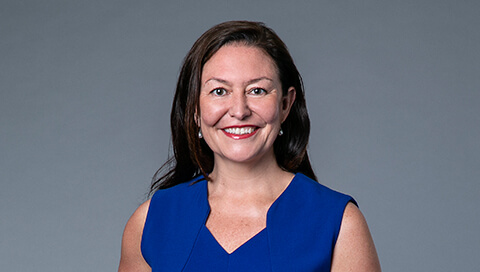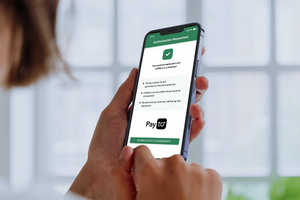- Published
- 16 Feb 2024

 Cuscal’s mobile contactless payment solution enables quick and seamless provisioning – an Australian first delivering tomorrow’s world today
Cuscal’s mobile contactless payment solution enables quick and seamless provisioning – an Australian first delivering tomorrow’s world today
Sydney, 27 March 2014: End-to-end payments leader Cuscal has today announced the launch of the first trial of a HCE (Host Card Emulation)-based mobile payment capability, for Visa cardholders, in Australia and the Asia-Pacific.
The future-ready solution has been developed by Cuscal in Sydney and when launched commercially, will provide Australian consumers with greater choice when it comes to making secure payments with their mobile phones.
The Cuscal HCE mobile payment solution effectively turns an NFC-enabled phone running the latest version of the Android KitKat mobile operating system into a contactless payment device. With confidential payments data1 stored in a secure cloud, it provides a strong level of security.
When commercially available, the solution will enable Visa cardholders whose cards are issued by one of Cuscal’s financial institution clients to use their mobile phone to make contactless payments via existing Visa payWave contactless point-of-sale terminals that are widely available in Australia. Sensitive payments data is stored in Cuscal’s secure cloud service which the mobile phone connects with via the cellular network.
A pilot team of Cuscal staff cardholders have begun testing the HCE capability over the last week. Following the successful completion of the trial, Cuscal aims to make the solution available to its Australian client base in the middle of this year as part of its broad suite of mobility services; either as a complete client-branded mobile application, or via an application programming interface (API).
This will allow Cuscal clients to offer innovative mobile payment solutions to their customers, while minimising upfront development costs by leveraging this secure and cost-effective solution.
Adrian Lovney, General Manager of Product & Service at Cuscal, said: “Cuscal’s HCE mobile payments solution is a shining example of Australian innovation delivering tomorrow’s world today. Getting payments inside phones has traditionally been difficult because of the need to coordinate multiple parties such as trusted service managers, handset manufacturers and telecommunication providers. The HCE approach simplifies this while maintaining the highest level of payment security for cardholders.
“A level of openness will be built into Cuscal’s foundation mobile application offering, so we can continue to develop the HCE mobile payment solution in line with partner demand and device innovation as well as ensure that it can be integrated with the New Payments Platform (NPP) when it is ready,” he said.
Stephen Karpin, Group Country Manager for Visa in Australia, New Zealand and South Pacific said: “Australia is again leading the charge in payments innovation and we are delighted to work with Cuscal on this trial to help make next generation commerce a reality. With 40% of face to face Visa transactions in Australia already taking place via the Visa payWave contactless technology, it is important to develop the infrastructure to deliver secure mobile payments to the consumer.”
Jason Murray, General Manager Products & Marketing, CUA, said: “It’s exciting that our key payments partner is developing cutting edge mobile payments infrastructure, which we at CUA will be able to leverage for the benefit of our customers in the future.”
Brian Parker, Cuscal’s Chief Information Officer, was the first person to perform a live HCE-based Visa payWave transaction using the new solution with the purchase of two packets of Tim Tams at a 7 Eleven in Sydney’s CBD on 17 March 2014.
Mr. Parker says Google’s Android KitKat operating system, combined with the security of Cuscal’s cloud service and Visa’s network, will provide clients with the highest level of assurance around security whilst being able to access future mobile payments technology and reducing the impact of upfront development costs.
“Increasingly, NFC technology is being developed in the cloud and maintained by trusted technology providers; this is the future of payments,” said Mr. Parker. “Importantly this solution is provisioned securely with multiple layers of protection built-in.”
“Cuscal’s client-branded mobile payments solution, incorporating HCE, will be refreshed and updated on a continual basis to accommodate new functionality in line with device evolution, industry innovation, new payment channels, market demand and innovation within our own ATM, payments and switching environment. We also plan to make HCE payments capability available to our clients via an API.”
Additional points:
1 Such as encryption keys, card numbers or PINs.



